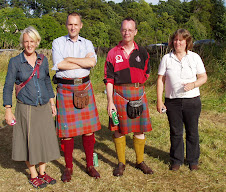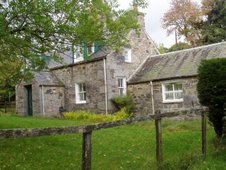Well.
I finished the tax. I got it all printed out and all
together. I sat down at the computer in a fairly composed state this morning –
and couldn’t log on. I have been doing it without a hitch on-line in January
for a decade or so. It is as if my anxiety, this year, about whether I could do
it, has itself created the problem.
I floundered about for quite a while, finding various help
screens into which I typed my husband’s Taxpayer Reference Number and his
National Insurance Number, each of them a unique identifier, let alone in
combination, and they kept saying they could find no such account. Finally I
got through, and they are going to send me in the post a new Government Gateway
User ID – I think that’s the problem.
There’s still time, although if the new number doesn’t get
me in I don’t know what I’ll do.
And there’s still Perdita’s operation, scheduled for
Thursday, to worry about. She’s still in
heat, although it’s subsiding. We’ll see, tomorrow.
Meanwhile knitting continues well, very comforting on so
stressful a day. I’ve reached row 57, of 86, in the border pattern of Mrs
Hunter’s shawl.
And I found myself wondering, when did charts come in? and
why? Was there a pivotal moment? For lace knitting, Amedro’s “Shetland Lace” in
’96 – good heavens! as late as that! – must have been the last serious
text-based lace book. Hazel Carter’s “Shetland Lace Knitting from Charts” – the
title implies that that wasn’t then the norm – was published in 1987.
Mrs Hunter’s pattern is so easy that I haven’t had to chart
it. It’s meticulously accurate. But – this is hard to express – the ()’s and
the *’s don’t exactly relate to the motifs and it has been difficult,
sometimes, in the modern idiom, to get my head around what’s going on. Whereas
I have knit many of Amedro’s patterns and have loved the gentle rhythm of her “take”’s
and “cast”’s.
I have knit a couple of things from the remarkable Bestway
leaflet – “Traditional Shetland Scarves and Shawls” – which I hope Jamieson
& Smith still sell. My only possible recourse, there, was to chart the
patterns row by row. The accuracy of the proof-reading there is simply astonishing.
Somewhere in my extensive archives I think I actually have a
pattern for a Fair Isle sweater, cut from a magazine, in which the pattern is
written out row by row: K4blue, 5 yellow…. I think the first Kaffe Fassett
pattern I ever saw, in a VKB of – what date? I’ll see if I can find it tomorrow
– was more or less like that. “Glorious Knitting”, 1985, is firmly charted.
Maybe it was just the inexorable rise of common sense.



Jean, I very rarely comment but had to tell you how much I enjoy your blog. Everything from all the lucky family members you knit for to politics/tennis/books, and sp cially your experiences knitting over such a period of time. I'm pretty sure I learned the bit about the first stitch your needle goes into for a decrease is the one that ends up on top here, and it is one of my favorite bits of knitting wisdom. Sending you and yours (esp Perdita at the moment) all sorts of good wishes from NYC.
ReplyDeleteI can knit from charts, but truly enjoy knitting from text. I guess the sentences remind me of algebra equations, with "the proof is left to the student as an exercise". (Sadly, in the United States students no longer prove Algebra equations. Ah, well.)
ReplyDeleteI agree with you Barbara-Kay. Intellectually I appreciate charts but I feel more in control knitting from the text.
DeleteAre you watching any of the Australian open? Roger pulled off a close fight early this morning in the US. I watched the third set thru one eye as it was 1 am by that time. But it was the closest. American Noah Rubin a qualifier gave a good fight and I will look for him in the future. But my heart is with Roger and even tho he flagged at the beginning of the third he reached deep and fought off several match points to take the tie breaker. If he continues he will play Andy ......
ReplyDeleteIt is wonderful that "the inexorable rise of common sense" has added the chart to knitting. I only wish that were true for American politics this last election year. Dreading Friday and turning to simple knitting to occupy a mind still numb. Best to Perdita. My husband, no fan of cats having kittens capriciously, once woke me early one morning to see a line of toms outside our front door waiting for our Chloe to emerge. The resulting litter was her last. We were all happier, and she lived a long, contented, much-loved life.
ReplyDeleteI charted Mrs Laidlaw's Pattern a zillion years ago because I couldn't fathom following it written out as it was in Gladys Thompson. IT was a painful process, and everytime I see it charted nicely, not in pencil on a graph paper pad, I am grateful for so much charting. Did charting become more popular when computers became more common?
ReplyDeleteI think it was the rise of easy picture publishing. Before, images had to be engraved or photo-engraved. It was expensive, and for a knitting book, the entire book would have had to be photoengraved - as if your blog were done entirely in jpegs, with no way to correct typos later. Then newer systems made it easier and cheaper to add pictures, and computers made it easier to create charts. The idea of charts wasn't new. There were hand-made charts of stranded patterns in the oldest Icelandic pattern books, and charts in medieval books of patterns for various forms of embroidery - the idea was old, but publishers had to be able to produce huge amounts quickly.
ReplyDeleteFascinating question re charts. Alice Starmore seems to have moved to charts for cabled patterns about 1990 if the dates on "Sweaters for Men" and "Fishermen's Sweaters" are to be believed.
ReplyDeleteHowever, Barbara Walker published "Charted Knitting Designs", her third Treasury, in 1972. Interestingly, the charts in that one look to be hand-drawn, and she explains at some length how she developed her system. She comments that European knitters are more likely to be already familiar with charts.
I don't recall exactly when I moved over, but it was more like 1990 than 1972.